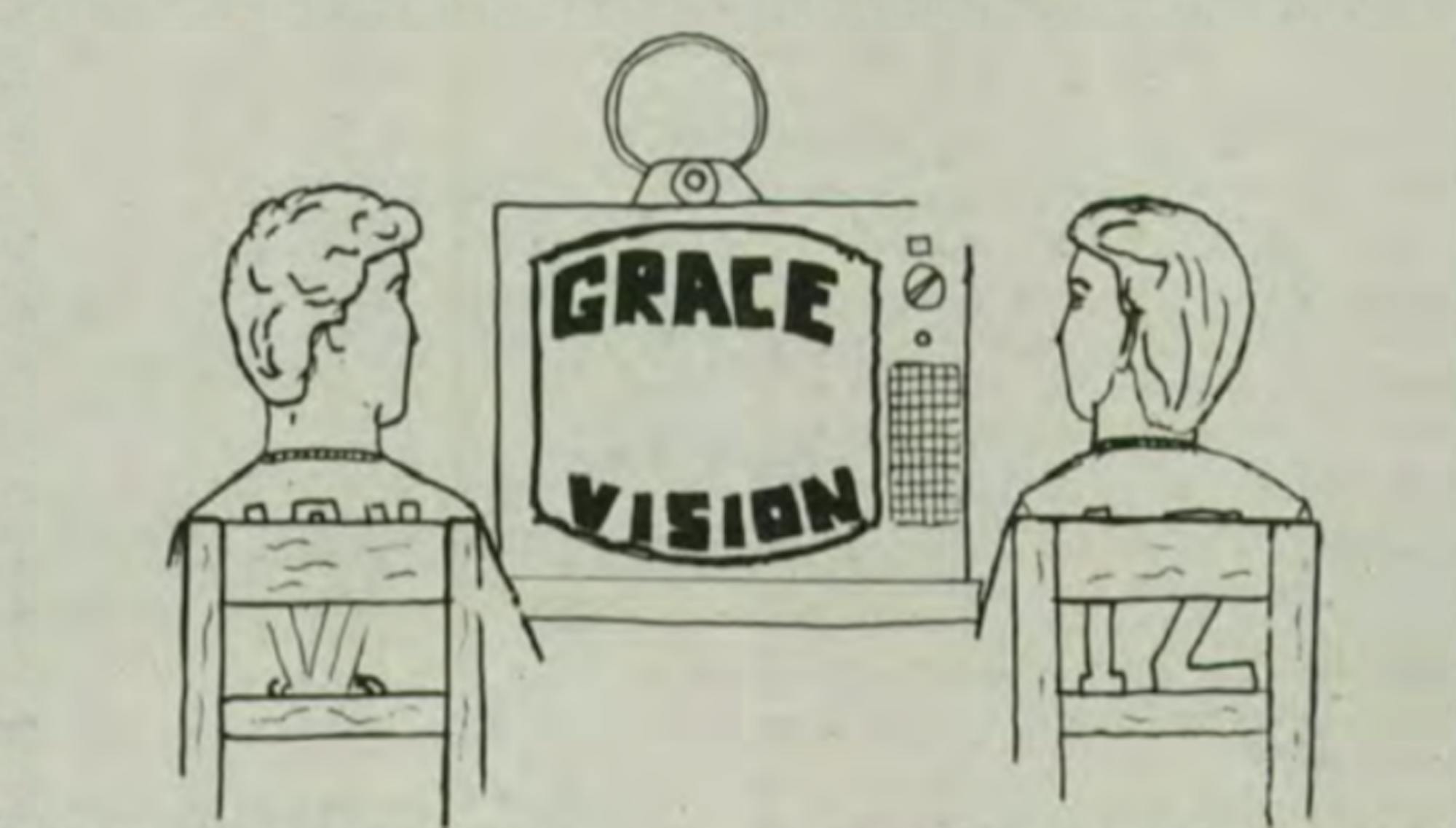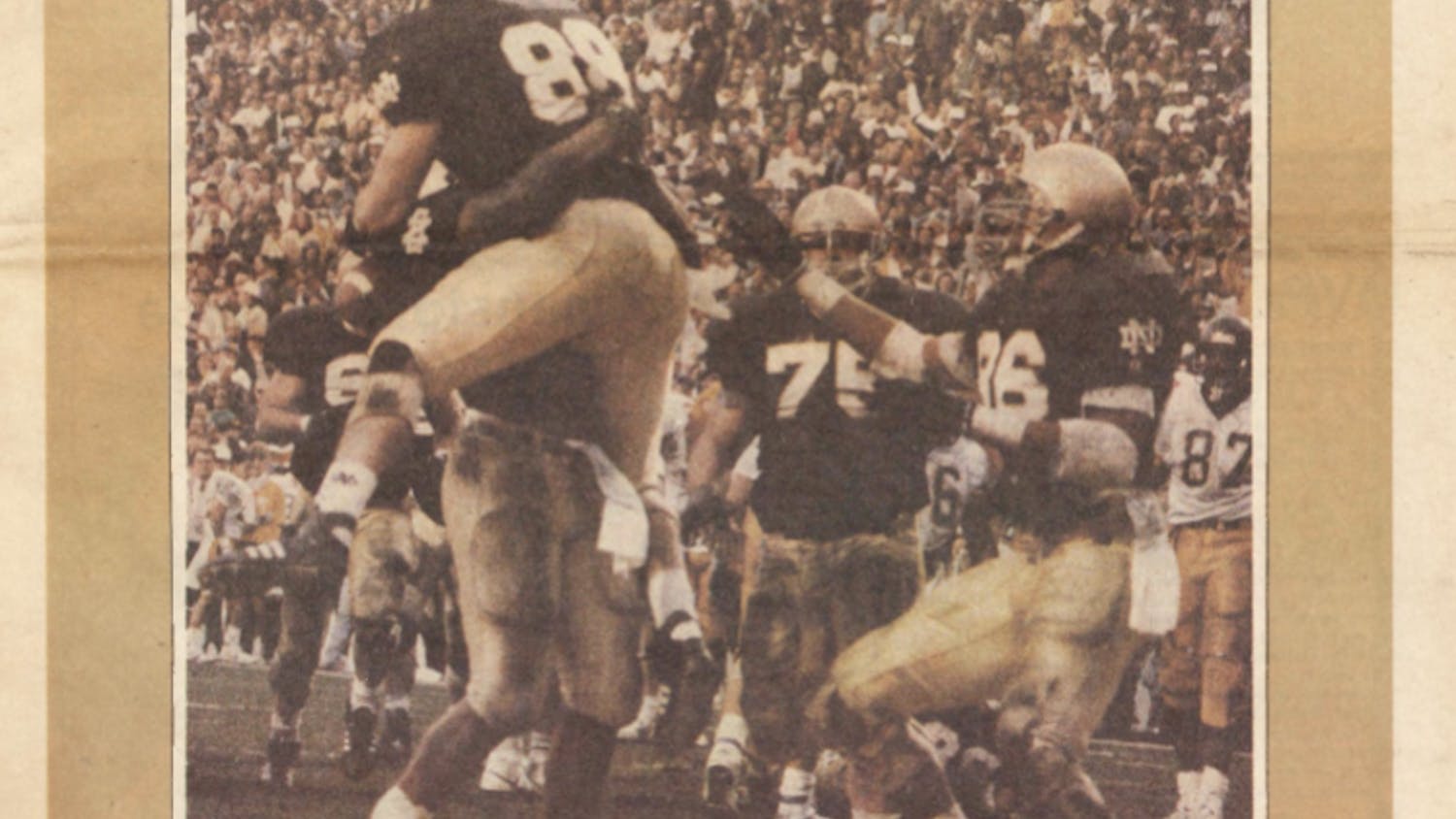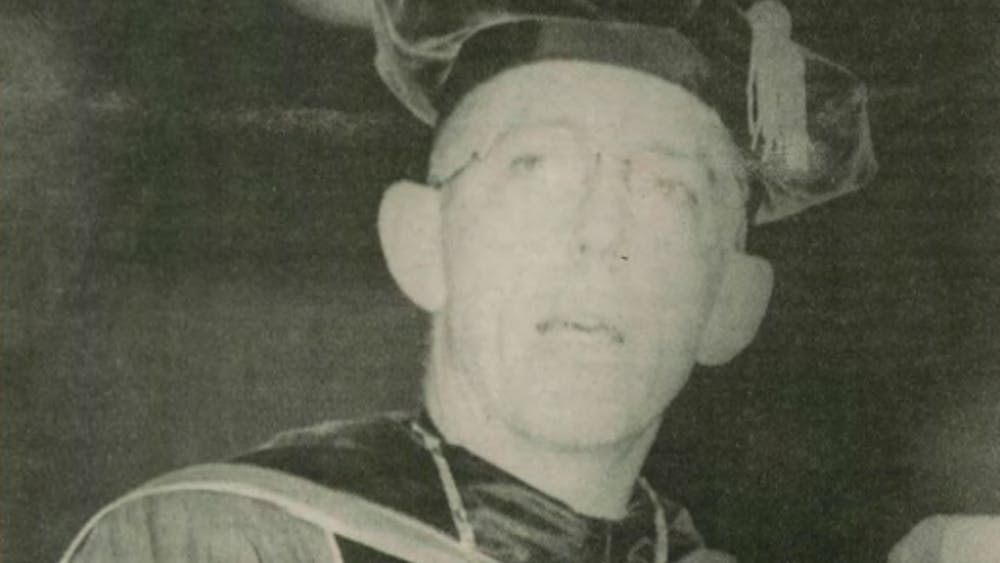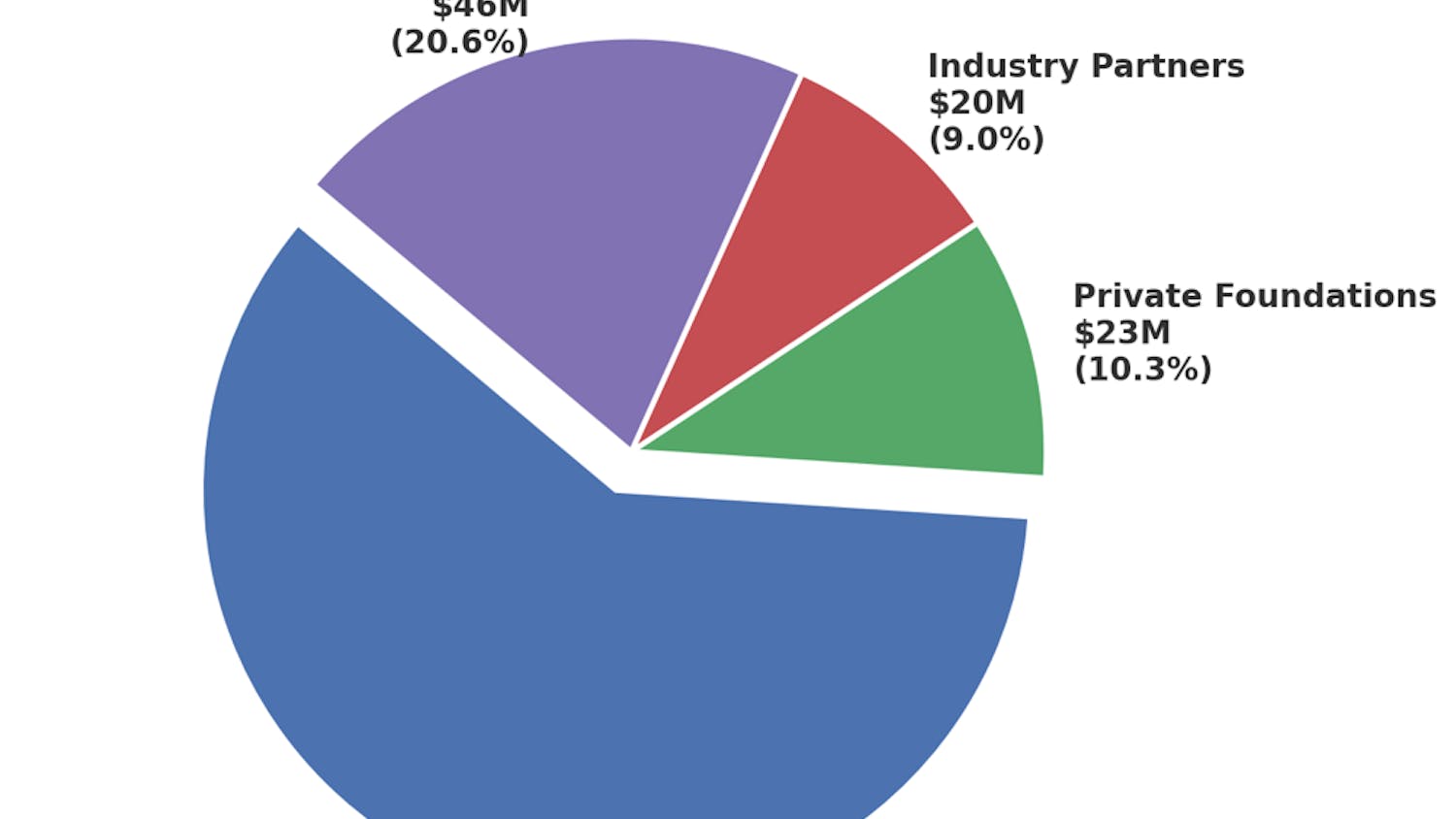 Diane Park | The Observer
Diane Park | The Observer
Live from Grace Hall
April 18, 1987 | Gina Camarena | Researched by Lilyann Gardner
Although Grace Hall is now known as an administrative office building, the towering building on the northeast side of campus was once home to hundreds of students. Not only does the former residence hall, which opened in 1969, famously distinguish itself from neighboring Flanner Hall by illuminating an eight-foot-tall “#1” sign atop its roof, but its traditions don’t stop there. Grace Hall stood apart from other dorms on campus by implementing its very own broadcasting station in the late 1980s called Grace Vision, exclusively for the dorm’s residents. The cable antenna the dorm was equipped with allowed every room to receive cable broadcasting, which included programming of special events on campus.
Observer Archives, April 18, 1987.
Observer Archives, April 18, 1987
Men’s dorms participate in ‘Bun Run’
Dec. 6, 1993 | Karen Dubay | Nov. 3, 1999 | Bridget Mahoney | May 2, 2007 | Conor McEvily | April 28, 2015 | Fred Kraus | Researched by Aidan O’Malley
The dorms might have changed, but the tradition stayed the same: For many years, certain Notre Dame men would streak through campus during finals week. The first mention of this “Bun Run” in the pages of The Observer came in 1993 — although the first instance of the Run itself remains unclear. In the Dec. 6 issue, Karen Dubay ‘95 reported on the Keenan Bun Run, which occurred late at night every finals week and involved traversing campus on bikes, rollerblades and the Knights’ own feet. In the same article, Dubay also described Alumni Hall’s “streak of the second floor of the library.” Also held during finals week, this iteration involved the Dawgs wearing only sunglasses, Santa hats or jingle bells — or nothing at all. By 1999, Bridget Mahoney ‘01 revealed — in a Scene spotlight of Alumni from the Nov. 3 issue — that the men had taken to wearing masks to conceal their identities.Word of the Run ran cold in The Observer for years after that, until the May 2 issue in 2007. Sometime after the turn of the century, it seems, the Bun Run’s reputation transferred over to the late Zahm House. Zahmbie Conor McEvily '07 penned a letter to the editor describing how his fellow residents had been informed that anyone caught participating in the tradition — now moved to the LaFortune Student Center on the Sunday before finals — would be apprehended by Notre Dame police. While McEvily allowed that these threats were “logical,” he also argued the tradition had a place at Notre Dame. “The Bun Run — in its own quirky, irreverent way — reminds us that despite being the best and brightest this country has to offer, we shouldn’t take ourselves too seriously,” he wrote.But the Bun Run would come to an end in about a decade’s time, spurred in part by another letter to the editor. In the April 28, 2015 edition, Fred Kraus — the manager of The Huddle — called for a boycott of the Run on behalf of employees.
Observer Archives, April 28, 2015
Morrissey tradition formerly etched in pages of The Observer
March 26, 2007 | March 27, 2007 | March 31, 2008 | Researched by Alysa Guffey
Before clues to Morrissey Manor’s Medallion Hunt were dispersed to the masses on social media, The Observer used to find itself in the middle of a campus-wide game of hide-and-seek.Every spring, Morrissey launches its annual tradition, a weeklong scavenger hunt to find a small, but highly coveted, wooden token with the hall’s signature “M” etched in. The prize for the winner? A lofty $250 (with records showing one year it was bumped to $300). The tradition has continuously bonded friends and challenged minds, but the path to victory looked a little different a mere 15 years ago. Students had to open up the pages of the newspaper to find the daily clues, scattered between the articles published that day.On March 26, an advertisement in The Observer kicked off the ‘07 hunt. The first clue read, “Blue and Gold jerseys will lead to the find, Father Vierling’s riddles will mess your mind.”
Observer Archives, March 26, 2007

Observer Archives, March 27, 2007









